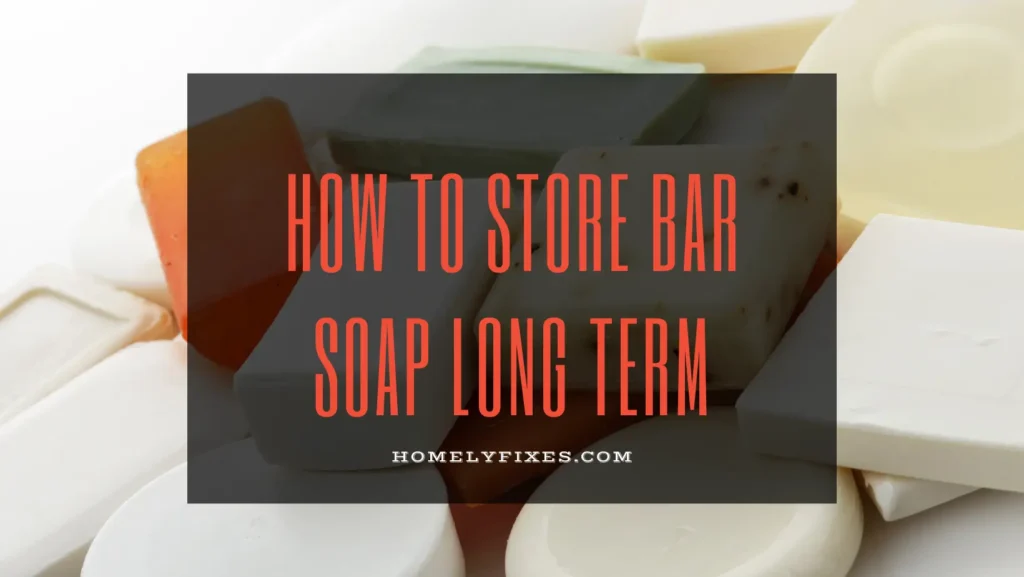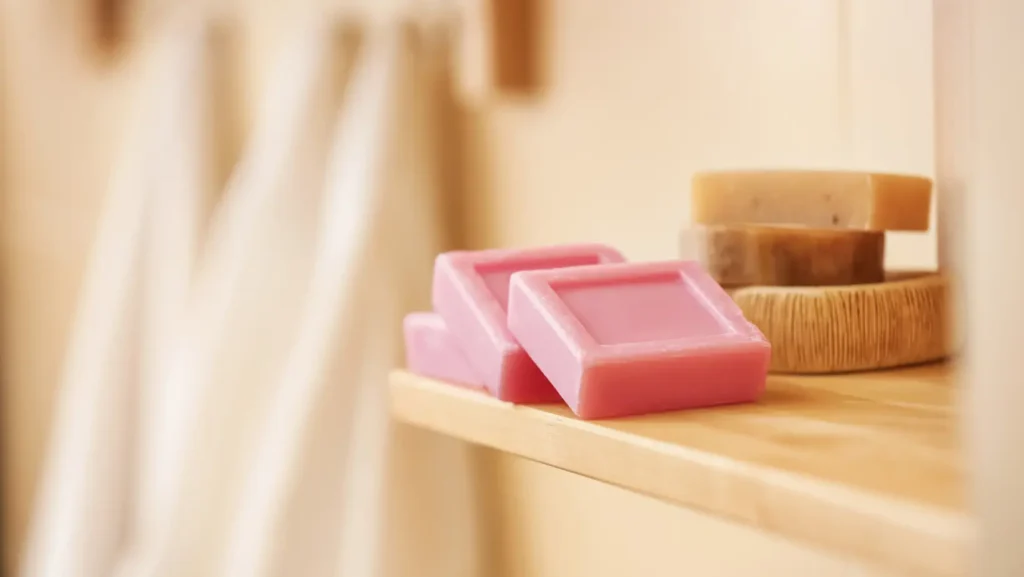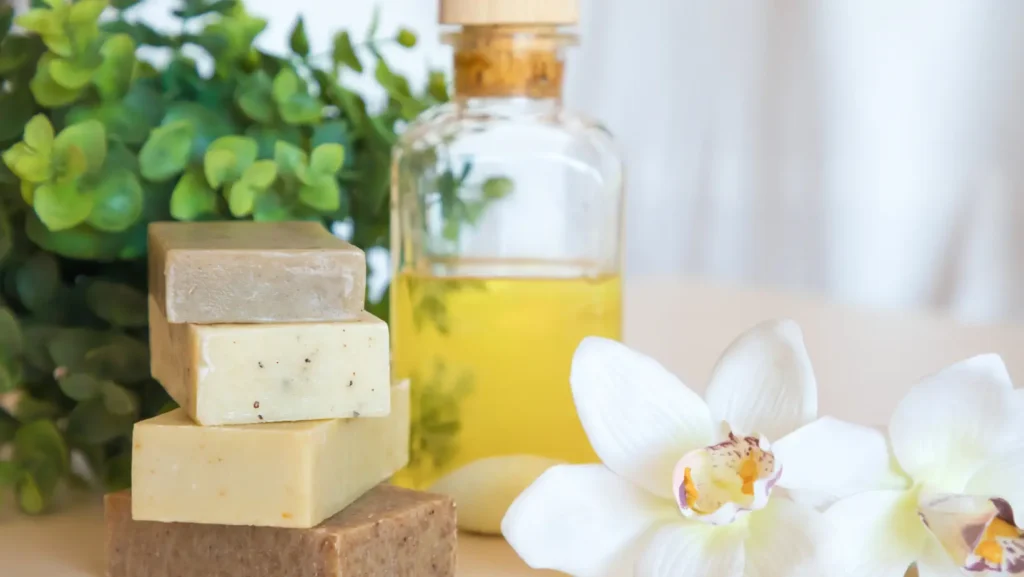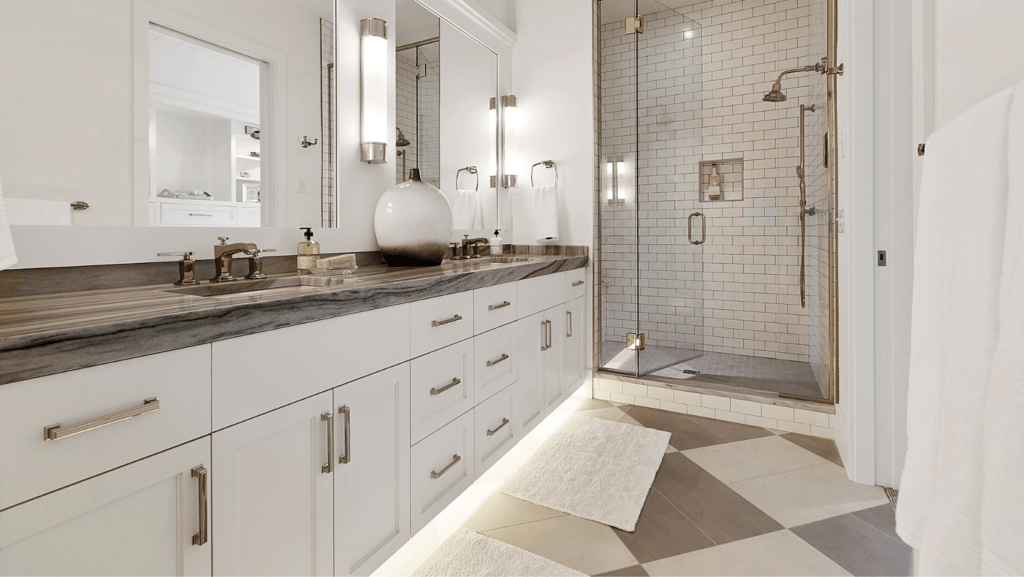
Have you ever opened up your soap dish only to find a soggy, mushy mess? Or been disappointed to find your favorite soap bar is now a weird shape?
Most of us have experienced the frustration of a bar of soap that doesn’t last. But with a few simple tips, you can extend the life of your soap and enjoy it for longer.
Here are some helpful hints for storing bar soap:
Summary – The best way to store your bar soap long-term is to ensure that the bars of soap are kept in a cool, dry, and well-ventilated place, Away from heat, sunlight, and moisture.
How to Store Bar Soap For Long Periods
Store Bar Soap in a Dry Place

Nothing makes your bar soap dematerialize faster than exposing it to water or a wet surface. When water soaks into your bar soap, it becomes soggy and damages its essence.
Keep your bar soap away from places prone to moisture. Like areas around your shower head, pipes, or water dispensers to prevent water from splattering on it.
Keep Bar Soap in a Cool Place
Keeping your bar soap in a hot environment or exposing it to heat will melt it and leave it liquified, contradicting its entire purpose.
Leave your bar soap to air dry after a hot shower to take out moisture accumulated from the steam. Also, avoid storing your soap bar close to heat vents or electronics that emit or conduct heat.
Keep Your Bar Soap Away from Direct Contact With the Sun
In addition to keeping your bar soap in a cool place, avoid exposing it to direct sunlight. UV rays from the sun will disintegrate your bar soap, change its color and lessen the fragrance over time.
Use a Soap dish With Drainage

Store bar soap under use in a soap dish with drainage in the bottom. This drainage strain any form of moisture from your bar soap. Soap dishes without drainage keep in water, making it harder for your soap to dry between uses. While some soap dishes come in fancy plastic, if they are without a drain, your bar soap will dematerialize and become soggy and unsightly.
Don’t keep Bar Soap on a Metallic Surface
Metal causes soap to oxidize, and the oxidization can result in dreaded orange spots ( DOS) that appear in various sizes or spots on the soap and cause your bar soap to turn rancid.
Rancidity produces an unpleasant odor and can ultimately lead to getting rid of your bar soap.
Let Soap Air dry After Each Use
After taking your shower, doing your laundry, or even washing those dishes with your bar soap, allow it to air dry. Doing this stretches the period of its use as it won’t always get soggy and ultimately diminish.
Cut Bar Soap into Smaller Sizes and Store it in a Soap Saver Pouch
Cutting your bar soap into smaller pieces and keeping it in a soap saver pouch lowers its chances of getting wet.
Thus, as you use a smaller piece each time, only that smaller piece becomes moist, while the rest stays dry and ready to be used the next time.
A soap saver pouch is usually made with porous fabric that makes bar soap aerate. However, the Soap saver pouch should be kept in a cool and dry place.
Don’t Store your Bar Soap close to Things with a Strong Smell
For example, if you store your bar soap in the kitchen, you don’t want to keep it beside your garlic or Onion. The smell from these things can permeate your bar soap over time.
It is advisable to store your soap near things with great fragrance or a similar scent as your soap.
Cure Homemade Bar Soap for a Longer Period
Curing is the process in soap making in which water evaporates from the soap to enable the bar of soap and its ingredients to harden more completely so that it will last longer once you start using the soap and it starts to get wet regularly.
To do this, let your soap air dry for 6 to 8 weeks. Remember, we don’t need sunlight!
Ideas on Places to Store Unused Bar Soap Long Term
Remember, the best place to store your bar soap is a cool and dry place from direct sunlight. It could be a store room, garage, the shelf in the laundry, wherever you consider safe. But where do you “actually” keep bars of soap that are not in use?
Plastic Box
A plastic box is a great place to store your bar soap because they are durable and slightly waterproof. Just ensure they have a covered seal and keep proper ventilation in check.
To do this, slightly open the covered seal of the plastic box or poke small holes around the plastic box for air.
Wooden Box
Wooden boxes are efficient for storing soaps as long as there is a free flow of air for ventilation.
Cardboard or Shoe Boxes
Storing your bar soap can be as simple as keeping it in shoe boxes, but you must watch out for wet surfaces as these kinds of boxes are not as durable as plastic or wooden boxes and are absorptive to liquid. You can poke holes or open the cover slightly for air.
Decorative Glass Jar
Glass jars are impermeable. After putting your bars of soap in them, you can place your glass jar on top of your bathroom countertops. However, be careful when using a glass jar as it can fall or slip, causing it to break and lead to injury.
Arrange Unused Bars of soaps on a shelf or Drawer
Create some fun time for yourself and keep safe your bar soap by arranging it on a shelf or drawer. You can arrange them according to their different shapes, colors, or scents to make things more interesting! Shelves or drawers provide a safe and dry atmosphere for your bar soap.
How Long Can You Store Bars of Soap?
How long bar soaps can be stored depends on the ingredients used in making the soap, that’s why many of these bar soaps include an expiration date on the soap packs or give a speculated time of use from the manufacturing date.
The average period to store your bar soap is three years. Although the bar soap might lose its fragrance, get slightly discolored, and lather less over time, it is usually still functional, safe, and useful even after it is expired, as long as it still lathers.
Two Guidelines on How Long Bar Soap can be Stored as Determined by the Ingredient.
Many of these bar soaps are made with antioxidants and preservatives, so these guidelines pertain mostly to homemade bar soap without preservatives.
Soaps Made with Oils

Examples of some of these oils are Rosehip, Grapeseed oil, and sweet almond oil. Soaps made from these ingredients can be stored from six months to a year. This category of oils gets bad quickly and may turn your bar soap rancid. When the oil passes its shelf life, the soap’s chance of developing DOS increases.
Scented Soaps
Many scented bar soaps, usually with an essential oil like rosemary oil, lavender oil, or artificial fragrance, will lose their aroma within three to six months. However, the soap will still be useful and safe to use.
When should you Throw out Your Bar of Soap?
- Throw away your bar soap when it doesn’t lather anymore.
- Presence of Mold. The mold growth on your soap indicates that the ingredient used in making the soap is bad and decaying.
- The Smell is off or bad. Smelly odors are usually caused by rancidity. Rancidity occurs when soap oxidizes from exposure to heat, sunlight, or other kinds of contaminants.
FAQs On How To Store Bar Soap Long Term
How Long Can Bar Soap Last During Use?
You can use your bar soap for four to six weeks during use, depending on the size of the bar soap and how well you preserve it and let it dry out between uses.
How Do You Know When Soap is Expired?
The first way to know if your bar soap is expired is by checking the expiration date stamped on the wrapper of your soap. Nonetheless, other signs your bar soap is expired are if your soap is cracked and doesn’t lather up or if the fragrance from your soap has decreased or is nonexistent as compared to when you newly got it.
Can Bacteria Grow on Bar Soap?
Bacteria thrive on bar soap, but they usually don’t get you sick, and it doesn’t stop the soap from getting things clean.

